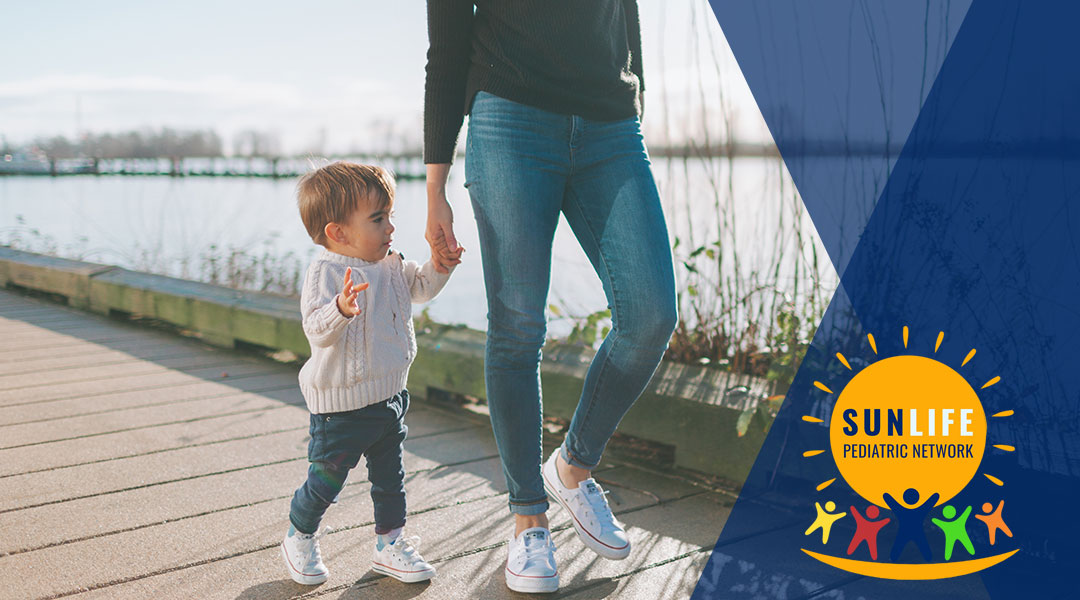Your baby’s first steps is one of the most exciting milestones to witness as a parent. But with new milestones comes new worries and challenges to address; are they developing properly, how should I aid them, what kind of shoes should they wear, etc. Read on to learn more about your child’s first steps and what you should look for when buying your child’s first pair of shoes!
Your Baby’s First Steps
First steps can happen anywhere between 9 and 18 months, and most children take their steps around one year old. Kids all develop at their own pace and begin walking at different ages. Research has established that when a child takes their first steps is NOT associated with later cognitive or motor development, but if you’re worried that your child isn’t walking by 16 months, you should address it with your pediatrician so they can evaluate the child and intervene appropriately if necessary.
Skills For Walking
Some skills that children need to develop before they can walk include:
- Good core muscles
- The ability to activate core muscles
- Hip and leg strength
- Balance
- Protective reflexes like putting out their hands when falling
- Hip righting- when they maintain balance moving on their hips
- Ankle righting- balancing on their feet, including gripping with toes
Such skills are practiced as they play and as they reach other general motor development milestones. Some pre-walking milestones include:
- Cruising holding on to furniture/objects
- Pulling to stand using their hands
- Transitioning in and out of standing
- Standing on their own for 30 seconds or longer
- Taking steps with a push toy
- Taking steps when holding onto something or someone
Walking
Your child’s walk may look funny the first few months, as it can take up to 3-6 months for them to develop a mature walking pattern. The term “toddler” comes from how babies look when they first start walking; they tend to toddle around with their legs far apart from one leg to the other! They may compensate while working on building up strength, stability, and equilibrium and balance.
Your Baby’s First Walking Shoes
Once your child starts to walk, you should think about their first pair of walking shoes. Shoes should only be used for safety and when walking outside, not when they’re first learning to walk. It is always recommended for children to learn to walk barefoot, since it helps them develop ankle muscles, strengthens their toes, works on balance and coordination, and also assists with important sensory input and arch development. If your child has delayed development or a gait issue, you may need to correct it with shoes. Speak with your child’s pediatrician and physical therapist regarding this issue.
The right shoes are critical to the health of your child’s feet. More than a quarter of the bones in the human body are in the feet! Most bone development happens before a child turns seven, and children’s foot bones start out as cartilage that develops into bone during these 7 years. A poor-fitting shoe at this stage can permanently warp the foot bones and cause future problems. Moreover, children sweat twice as much as adults, making it easier for their feet to slide around and increasing instability and blisters. Some things to look for in a show include:
- A stiff or rigid heel cup for stability/balance
- A soft, flexible sole
- A lightweight shoe
- A wide toe box for toes to spread
- Traction on the bottom
- An ankle strap (Velcro is highly convenient and helps with fit)
- Breathable material to reduce sweating and moisture
You should avoid slip-on shoes and plastic or non-breathable material. It is also wise to skip on expensive shoes, since they will grow out of them every 8-12 weeks.
Contact Us Today
You should have a pediatrician you trust to guide you through your child’s early development. Call Sunlife Pediatric Network to schedule an appointment today.

